Xiaodong Qu
Generalization Ability Analysis of Through-the-Wall Radar Human Activity Recognition
Oct 10, 2024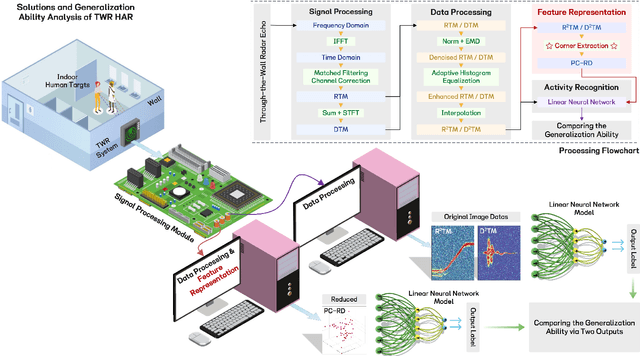
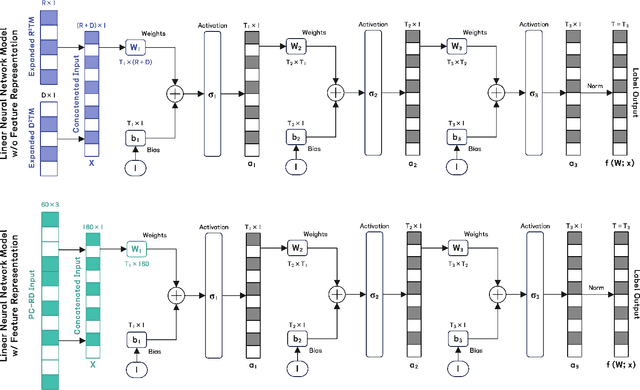
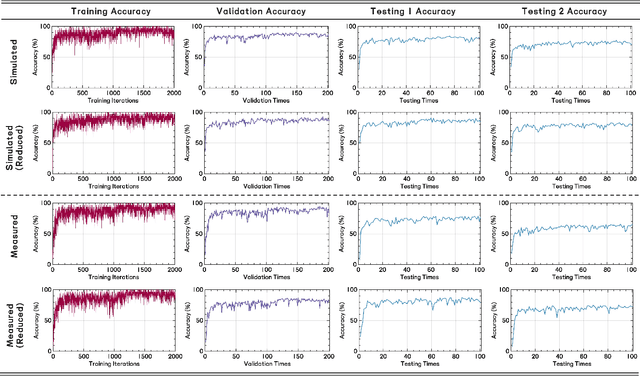
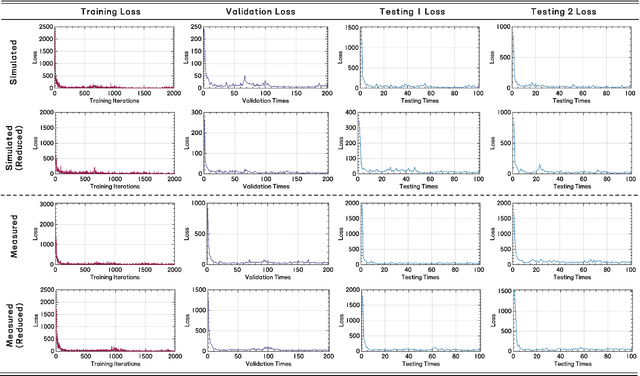
Abstract:Through-the-Wall radar (TWR) human activity recognition (HAR) is a technology that uses low-frequency ultra-wideband (UWB) signal to detect and analyze indoor human motion. However, the high dependence of existing end-to-end recognition models on the distribution of TWR training data makes it difficult to achieve good generalization across different indoor testers. In this regard, the generalization ability of TWR HAR is analyzed in this paper. In detail, an end-to-end linear neural network method for TWR HAR and its generalization error bound are first discussed. Second, a micro-Doppler corner representation method and the change of the generalization error before and after dimension reduction are presented. The appropriateness of the theoretical generalization errors is proved through numerical simulations and experiments. The results demonstrate that feature dimension reduction is effective in allowing recognition models to generalize across different indoor testers.
Generalizable Indoor Human Activity Recognition Method Based on Micro-Doppler Corner Point Cloud and Dynamic Graph Learning
Oct 10, 2024



Abstract:Through-the-wall radar (TWR) human activity recognition can be achieved by fusing micro-Doppler signature extraction and intelligent decision-making algorithms. However, limited by the insufficient priori of tester in practical indoor scenarios, the trained models on one tester are commonly difficult to inference well on other testers, which causes poor generalization ability. To solve this problem, this paper proposes a generalizable indoor human activity recognition method based on micro-Doppler corner point cloud and dynamic graph learning. In the proposed method, DoG-{\mu}D-CornerDet is used for micro-Doppler corner extraction on two types of radar profiles. Then, a micro-Doppler corner filtering method based on polynomial fitting smoothing is proposed to maximize the feature distance under the constraints of the kinematic model. The extracted corners from the two types of radar profiles are concatenated together into three-dimensional point cloud. Finally, the paper proposes a dynamic graph neural network (DGNN)-based recognition method for data-to-activity label mapping. Visualization, comparison and ablation experiments are carried out to verify the effectiveness of the proposed method. The results prove that the proposed method has strong generalization ability on radar data collected from different testers.
Through-the-Wall Radar Human Activity Micro-Doppler Signature Representation Method Based on Joint Boulic-Sinusoidal Pendulum Model
Aug 22, 2024


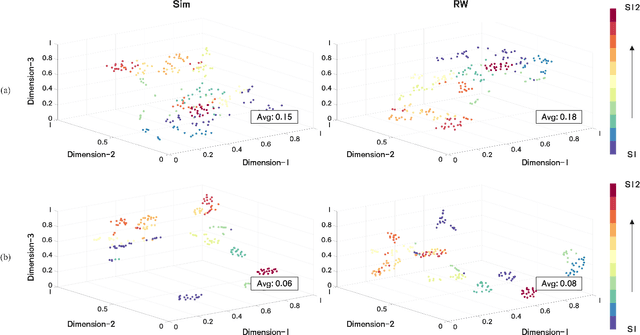
Abstract:With the help of micro-Doppler signature, ultra-wideband (UWB) through-the-wall radar (TWR) enables the reconstruction of range and velocity information of limb nodes to accurately identify indoor human activities. However, existing methods are usually trained and validated directly using range-time maps (RTM) and Doppler-time maps (DTM), which have high feature redundancy and poor generalization ability. In order to solve this problem, this paper proposes a human activity micro-Doppler signature representation method based on joint Boulic-sinusoidal pendulum motion model. In detail, this paper presents a simplified joint Boulic-sinusoidal pendulum human motion model by taking head, torso, both hands and feet into consideration improved from Boulic-Thalmann kinematic model. The paper also calculates the minimum number of key points needed to describe the Doppler and micro-Doppler information sufficiently. Both numerical simulations and experiments are conducted to verify the effectiveness. The results demonstrate that the proposed number of key points of micro-Doppler signature can precisely represent the indoor human limb node motion characteristics, and substantially improve the generalization capability of the existing methods for different testers.
Integrating HCI Datasets in Project-Based Machine Learning Courses: A College-Level Review and Case Study
Aug 06, 2024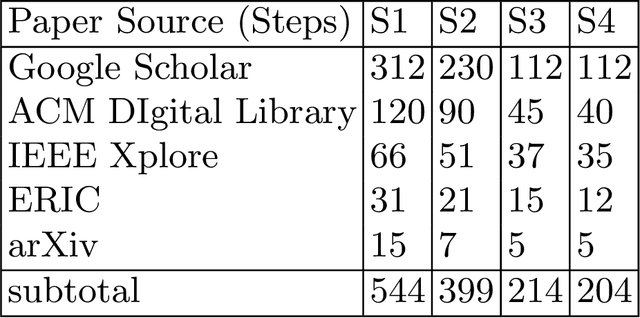

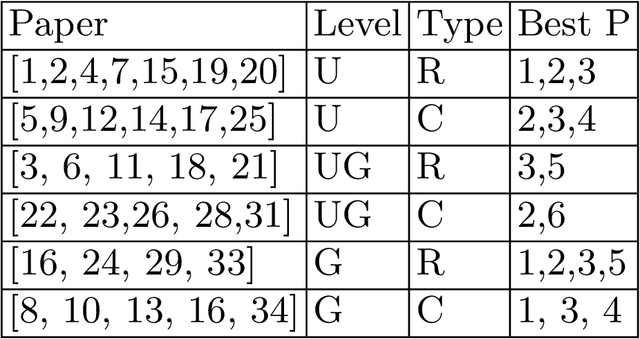
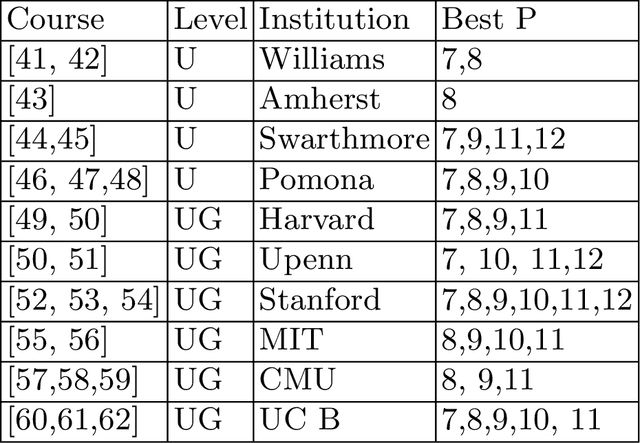
Abstract:This study explores the integration of real-world machine learning (ML) projects using human-computer interfaces (HCI) datasets in college-level courses to enhance both teaching and learning experiences. Employing a comprehensive literature review, course websites analysis, and a detailed case study, the research identifies best practices for incorporating HCI datasets into project-based ML education. Key f indings demonstrate increased student engagement, motivation, and skill development through hands-on projects, while instructors benefit from effective tools for teaching complex concepts. The study also addresses challenges such as data complexity and resource allocation, offering recommendations for future improvements. These insights provide a valuable framework for educators aiming to bridge the gap between
Advancing EEG-Based Gaze Prediction Using Depthwise Separable Convolution and Enhanced Pre-Processing
Aug 06, 2024Abstract:In the field of EEG-based gaze prediction, the application of deep learning to interpret complex neural data poses significant challenges. This study evaluates the effectiveness of pre-processing techniques and the effect of additional depthwise separable convolution on EEG vision transformers (ViTs) in a pretrained model architecture. We introduce a novel method, the EEG Deeper Clustered Vision Transformer (EEG-DCViT), which combines depthwise separable convolutional neural networks (CNNs) with vision transformers, enriched by a pre-processing strategy involving data clustering. The new approach demonstrates superior performance, establishing a new benchmark with a Root Mean Square Error (RMSE) of 51.6 mm. This achievement underscores the impact of pre-processing and model refinement in enhancing EEG-based applications.
Moving Target Detection Method Based on Range? Doppler Domain Compensation and Cancellation for UAV-Mounted Radar
Jul 04, 2024Abstract:Combining unmanned aerial vehicle (UAV) with through-the-wall radar can realize moving targets detection in complex building scenes. However, clutters generated by obstacles and static objects are always stronger and non-stationary, which results in heavy impacts on moving targets detection. To address this issue, this paper proposes a moving target detection method based on Range-Doppler domain compensation and cancellation for UAV mounted dual channel radar. In the proposed method, phase compensation is performed on the dual channel in range-Doppler domain and then cancellation is utilized to achieve roughly clutters suppression. Next, a filter is constructed based on the cancellation result and the raw echoes, which is used to suppress stationary clutter furthermore. Finally, mismatch imaging is used to focus moving target for detection. Both simulation and UAV-based experiment results are analyzed to verify the efficacy and practicability of the proposed method.
Trends in Machine Learning and Electroencephalogram (EEG): A Review for Undergraduate Researchers
Jul 06, 2023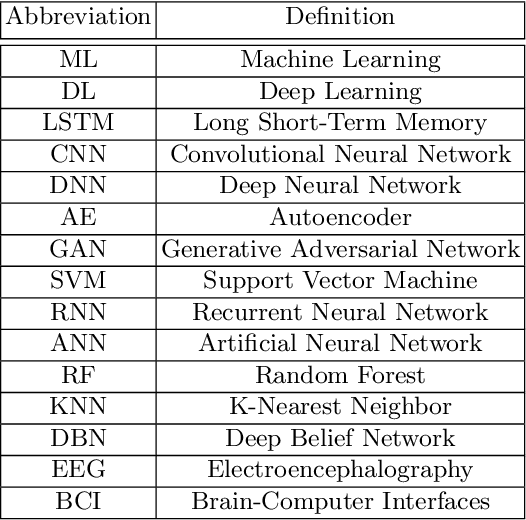
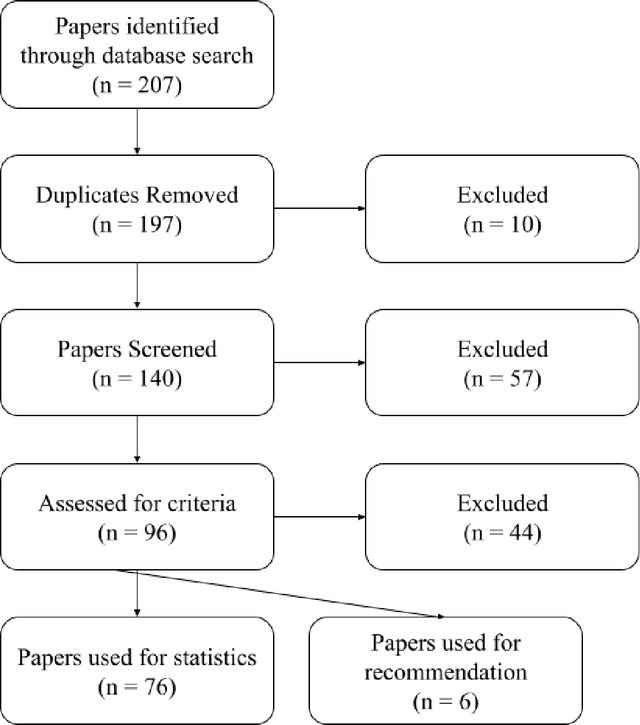
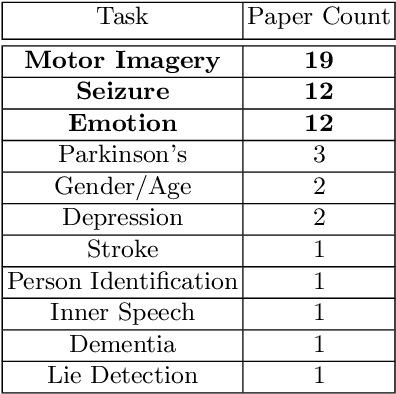
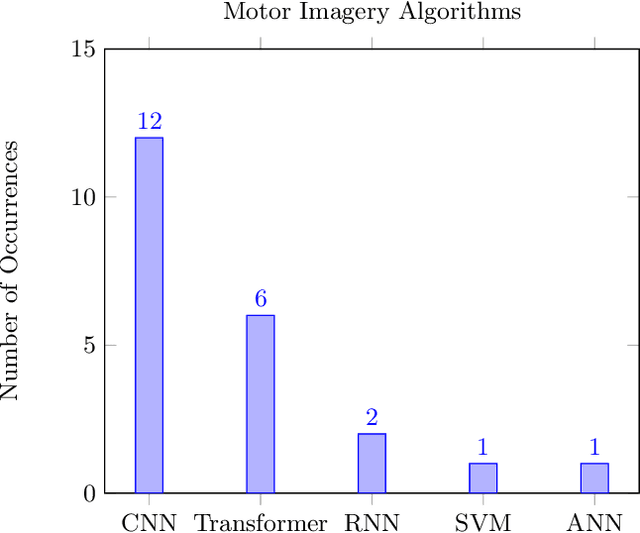
Abstract:This paper presents a systematic literature review on Brain-Computer Interfaces (BCIs) in the context of Machine Learning. Our focus is on Electroencephalography (EEG) research, highlighting the latest trends as of 2023. The objective is to provide undergraduate researchers with an accessible overview of the BCI field, covering tasks, algorithms, and datasets. By synthesizing recent findings, our aim is to offer a fundamental understanding of BCI research, identifying promising avenues for future investigations.
TWR-MCAE: A Data Augmentation Method for Through-the-Wall Radar Human Motion Recognition
Jan 06, 2023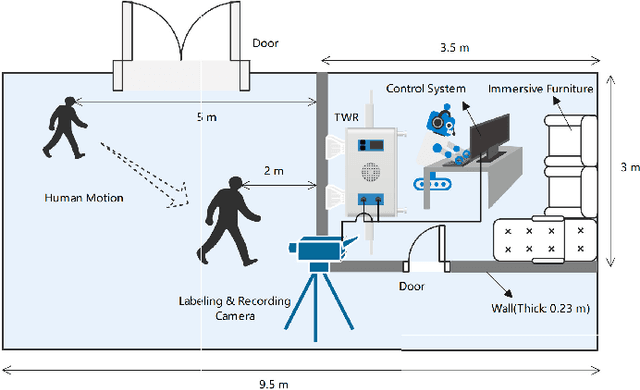



Abstract:To solve the problems of reduced accuracy and prolonging convergence time of through-the-wall radar (TWR) human motion due to wall attenuation, multipath effect, and system interference, we propose a multilink auto-encoding neural network (TWR-MCAE) data augmentation method. Specifically, the TWR-MCAE algorithm is jointly constructed by a singular value decomposition (SVD)-based data preprocessing module, an improved coordinate attention module, a compressed sensing learnable iterative shrinkage threshold reconstruction algorithm (LISTA) module, and an adaptive weight module. The data preprocessing module achieves wall clutter, human motion features, and noise subspaces separation. The improved coordinate attention module achieves clutter and noise suppression. The LISTA module achieves human motion feature enhancement. The adaptive weight module learns the weights and fuses the three subspaces. The TWR-MCAE can suppress the low-rank characteristics of wall clutter and enhance the sparsity characteristics in human motion at the same time. It can be linked before the classification step to improve the feature extraction capability without adding other prior knowledge or recollecting more data. Experiments show that the proposed algorithm gets a better peak signal-to-noise ratio (PSNR), which increases the recognition accuracy and speeds up the training process of the back-end classifiers.
* Publisher: IEEE Transactions on Geoscience and Remote Sensing (Volume: 60). Total Pages: 17. Total Figures: 17
Time Majority Voting, a PC-based EEG Classifier for Non-expert Users
Jul 26, 2022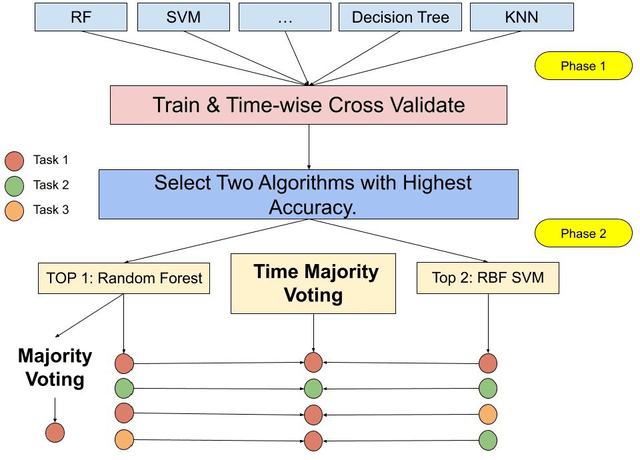

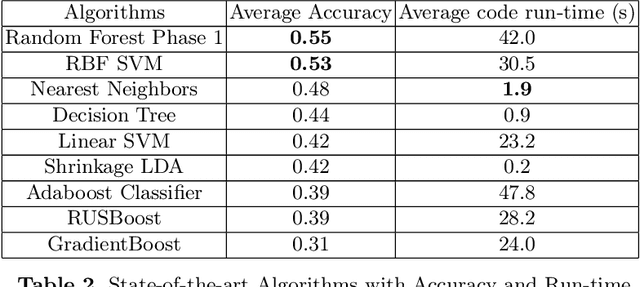
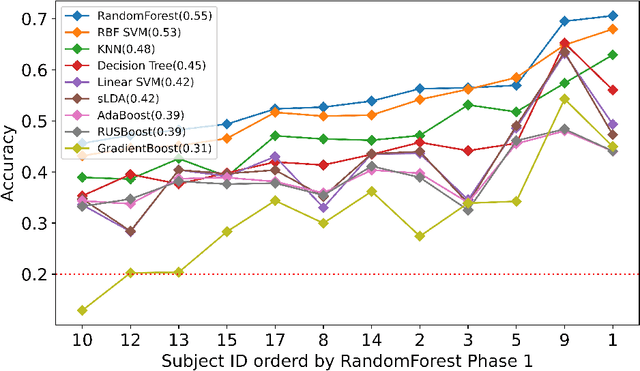
Abstract:Using Machine Learning and Deep Learning to predict cognitive tasks from electroencephalography (EEG) signals is a rapidly advancing field in Brain-Computer Interfaces (BCI). In contrast to the fields of computer vision and natural language processing, the data amount of these trials is still rather tiny. Developing a PC-based machine learning technique to increase the participation of non-expert end-users could help solve this data collection issue. We created a novel algorithm for machine learning called Time Majority Voting (TMV). In our experiment, TMV performed better than cutting-edge algorithms. It can operate efficiently on personal computers for classification tasks involving the BCI. These interpretable data also assisted end-users and researchers in comprehending EEG tests better.
 Add to Chrome
Add to Chrome Add to Firefox
Add to Firefox Add to Edge
Add to Edge